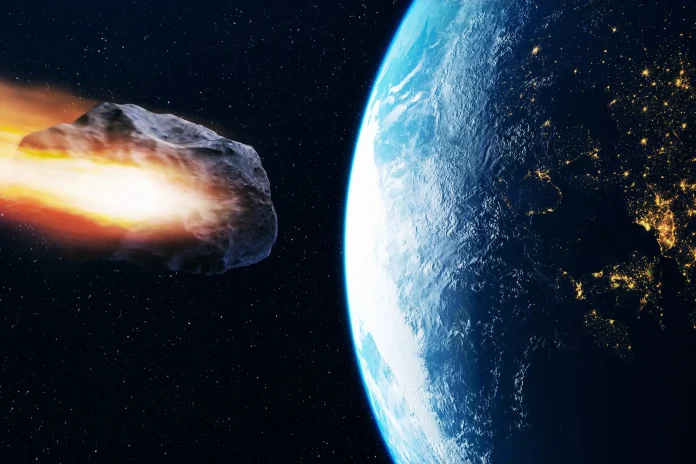NASA has launched on a thrilling mission to intercept the asteroid Apophis, orbiting around the Sun and bringing it within 1.3 times the distance between the Sun and Earth. It is nicknamed the God of Chaos asteroid as it races towards Earth’s orbit. Scientists explain that this celestial beast, roughly 340 meters (1,115 feet) wide, is set to make a close flyby of our planet in 2029, an event so rare it will only occur once every 7,500 years.
Close, but No Collision
While initial observations in 2004 raised fears of a potential impact in 2029, future calculations have ruled out any such danger. However, Apophis’s upcoming visit will be anything but ordinary. It will skim past Earth at just 20,000 miles (32,000 kilometres) – closer than some satellites and potentially visible to the naked eye in the Eastern Hemisphere for those looking.
OSIRIS-APEX Takes On the God of Chaos Asteroid
To solve the mysteries of this enigmatic asteroid, NASA has deployed the team of OSIRIS-APEX spacecraft. This intrepid explorer, previously known as OSIRIS-REx, recently returned from a successful mission to sample the asteroid Bennu. Now, it turns its sights on Apophis, ready to study its surface in unprecedented detail.
Seizing a Unique Opportunity
“The intrigue of Apophis is its exceptionally close approach of our planet on April 13, 2029,” explains a Nasa spokesperson. “OSIRIS-APEX will study Apophis immediately after such a pass, allowing us to see how its surface changes by interacting with Earth’s gravity.”
Beyond Earthly Concerns
This celestial meeting isn’t just about safeguarding our planet. As Dani Mendoza DellaGiustina, the principal investigator for OSIRIS-APEX assigned to examine data from God of Chaos Asteroid, points out, “The close approach is a great natural experiment…we know that tidal forces and the accumulation of rubble pile material are foundational processes that could play a role in planet formation.” Studying Apophis up close could illuminate how our solar system evolved from a swirling disk of waste to the planets we know today. It could explain the secrets of the universe that are hard to reach.
From Threat to Teacher
Once feared as a sign of doom, God of Chaos Asteroid Apophis has become a valuable teacher with time. By studying this celestial visitor, we gain insights into the workings of our universe and the forces that shaped our solar system as we know it. Amy Simon, the project scientist for OSIRIS-APEX, competently puts this information, “This mission will allow us to answer fundamental questions about the nature of asteroids 2waand their potential impact on our planet.”
A Legacy of Exploration
NASA’s mission to God of Chaos Asteroid Apophis is a testament to their insatiable curiosity and determined commitment to exploring the cosmos. It’s a reminder that even in the vast expanse of space, there’s always something new to learn and secrets to uncover. And what we know from Apophis might one day help us safeguard our planet from future upcoming celestial threats.
As OSIRIS-APEX embarks on its adventurous cosmic chase of God of Chaos Asteroid, the world will watch their move with eagerness and excitement. This unprecedented mission promises to reveal the secrets of Apophis and shed light on the origins of our solar system. So, keep your eyes on the skies, and prepare to witness the next chapter in the saga of humanity’s cosmos exploration.



